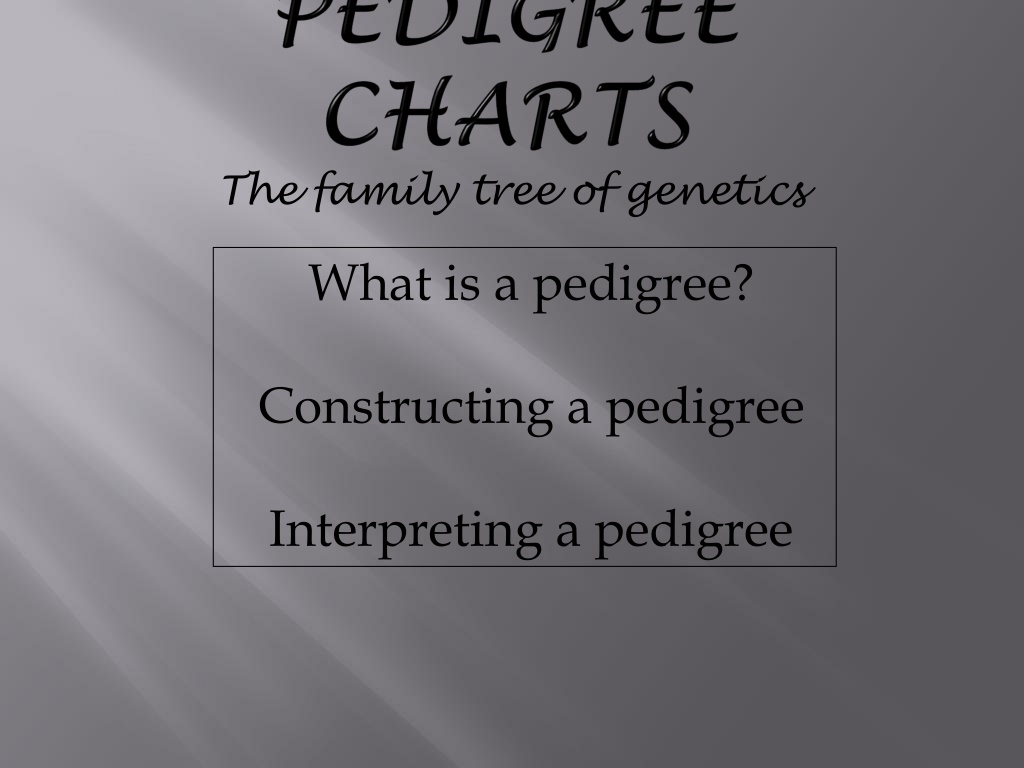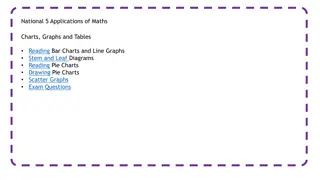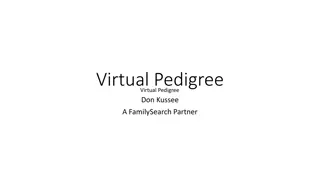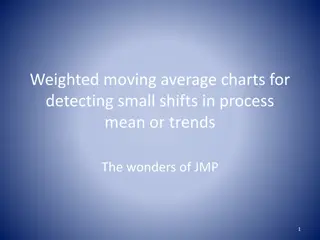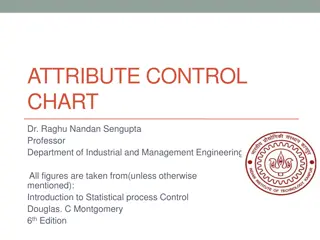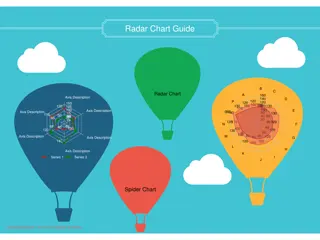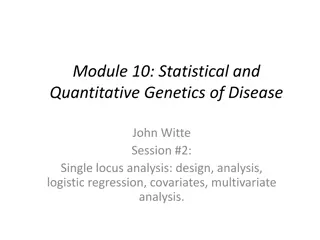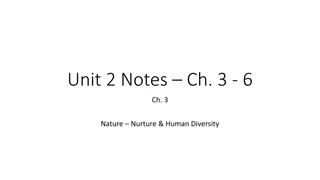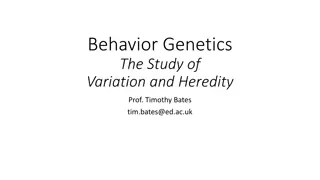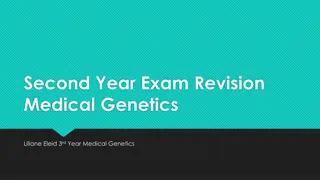Understanding Pedigree Charts in Genetics
A pedigree chart is a visual representation of how a particular trait is inherited over several generations within a family. By examining these charts, one can identify carriers of specific traits and determine the likelihood of passing on genetic disorders to future generations. The construction and interpretation of pedigrees involve various symbols and patterns that help geneticists investigate the inheritance of traits. Understanding the nuances of pedigree charts is crucial for unraveling genetic mysteries and predicting potential outcomes in genetic inheritance.
Download Presentation

Please find below an Image/Link to download the presentation.
The content on the website is provided AS IS for your information and personal use only. It may not be sold, licensed, or shared on other websites without obtaining consent from the author. Download presentation by click this link. If you encounter any issues during the download, it is possible that the publisher has removed the file from their server.
E N D
Presentation Transcript
The family tree of genetics What is a pedigree? Constructing a pedigree Interpreting a pedigree
Slide # 2 1. A Pedigree chart traces the inheritance of a particular trait through several generations. 2. One GOAL of using a pedigree chart is to figure out who are carriers of the trait, because this information is typically unknown. a. Carrier: someone who is heterozygous for a trait.
Slide # 3 Female Male
Slide # 4 1. Married Couple: Horizontal Line 2. Children: - Vertical line 3.More than one child: a horizontal line is drawn with a vertical line coming down for each sibling.
Constructing a Pedigree Slide # 5 1. Fraternal twins- can be the same or different gender a. Two line branching from the same point b. two different eggs and two different sperm cells. 2. Identical twins-almost always same gender a. Also called maternal twins b. Same as fraternal twins but a horizontal line is added. c. One egg and one sperm unite and later splits to create two babies
Slide # 6 1. Roman numerals to the left of the pedigree show the generations. 2.Birth Order: children are listed in birth order with oldest on left and youngest on the right. I II III
Slide # 7 1. Full Shaded: a. Affected person who shows a disorder 2. Half shaded: Autosomal carrier 3. Circle with dot: X-linked carrier always female 4. Deceased
Slide # 8 1. Pedigrees are used to find out: a. who are carriers of the disorder b. the probability of having a future child with the disorder. 2.To begin to interpret a pedigree, first determine if the disorder is: a. Autosomal dominant b. Autosomal recessive c. Sex-linked (carried on the X chromosome)
Slide # 9 First ask: Is it a Sex-linked or Autosomal Disorder? 1. If there is a much larger number of males than females who are affected then the disorder is Sex-linked. 2. If there is a 50/50 ratio between males and females who are affected then the disorder is autosomal.
Slide # 10 1. If it is autosomal disorder then ask: Is it dominant or recessive? 2. If two parents do not show the trait and their children do show it, then it is an autosomal recessive disorder - (parents are carriers or heterozygous) 3. If the disorder is autosomaldominant, then at least one of the parents must show the disorder.
Slide # 11 1. The following pedigree charts show affected individuals only. 2. Carriers are unknown at this point.
Slide # 12 Does this pedigree show a Sex-linked or Autosomal disorder?
Answer: Sex-Linked disorder much larger number of males are affected
Answer: Autosomal disorder 50/50ratio between males and females
Slide # 13 Does this pedigree show a Sex-linked or Autosomal disorder?
Slide # 14 Does this pedigree show a Autosomal Dominant or Recessive disorder?
Answer: Autosomal dominant disorder At least one parent of the affected children show the disorder
Slide # 15 Does this pedigree show a Sex-linked or Autosomal disorder?
Answer: Autosomal disorder 50/50 ratio between males and females
Slide # 16 Does this pedigree show a Autosomal Dominant or Recessive disorder?
Answer: Autosomal recessive disorder Two parents do not show the trait but their children do show it (heterozygous parents)
Autosomal Recessive Genotypes and Carrier determination D = Normal hearing d = deafness Slide # 17 Dd Dd Dd Dd dd dd dd dd Dd D? Dd dd dd
